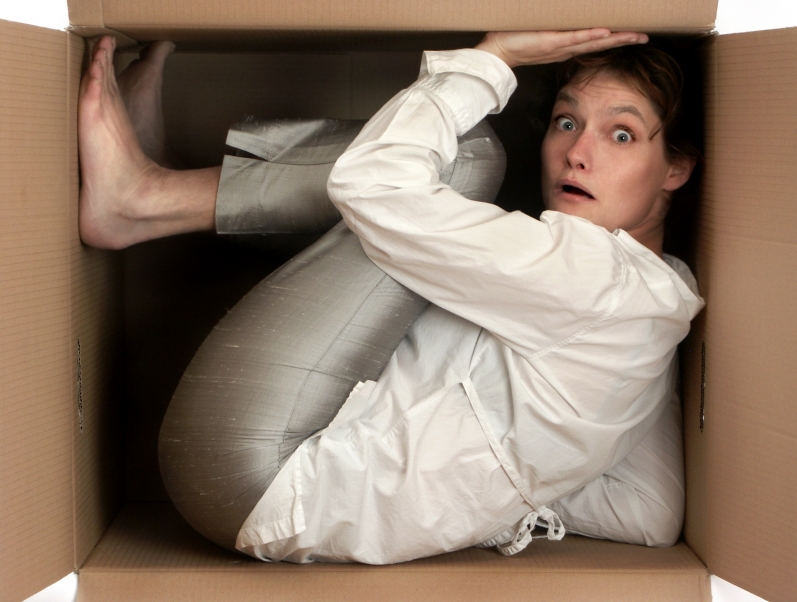Most people have heard the term ‘phobia’ and most have an idea of its meaning. In conversational usage, it refers to an extreme, and usually irrational, fear. Common phobias include fear of heights, spiders, moths, closed-in places, open spaces, lifts, flying and snakes.
For most purposes, phobias are regarded as irrational fears. There are various forms of help and support, treatment and de-sensitisation available. For example, if you are afraid of flying there are short courses available which offer lots of information to allay your fears and then take you for a short flight to prove that you can do it.
I’m told that such courses have a success rate of over 90%. Brilliant!
The remaining 1-10% is made up of the people who have a phobia of flying as opposed to an irrational fear. There is a difference:
An irrational fear is a mental construct. A person creates anxiety by thinking about the thing they fear and can work it up into a major problem, but faced with the actual situation they can be reasoned out of their fear and encouraged to face the thing they feared.
A phobia is a neurological connection between the thing that is feared and an intense state of fear. It triggers the fight/flight response and cannot be reasoned away. In fact, the more the person attempts to face their fear, the worse the response may become.
When someone is on the grip of a phobic response they have no choice about their behaviour and cannot easily shake off the fear. Someone with an irrational fear is likely to be able to suppress their emotions or hide them from others.
When people encounter someone with a phobia they may treat them with anything from total derision to sympathetic concern. Neither of which makes any difference to the experience of the sufferer! However, it can be very uncomfortable after the event to realise that you have displayed your fear of something others do not find even slightly unnerving.
Working with phobias has traditionally been a clinical process. Traditional desensitisation therapy can take anything up to 2 years of weekly sessions to completely dissolve the phobia. People would only seek help for a phobia when it became completely debilitating and most people simply learned to live with it.
For example, the music teacher who had agoraphobia built himself a comfortable life at home. His pupils came to his house for their lessons and no-one ever suspected that he was afraid to go outside.
The businessman who suffered from claustrophobia chose a car with large windows and drove himself everywhere. If he had to take a train he’d make sure it was a quiet time when he travelled and he never used the London Underground.
But what happens when a person can no longer ‘work around’ their phobia? What if the thing they fear suddenly becomes a part of their daily life? Or their working life?
This can happen when a company re-locates. Employees who have been working at ground level might be re-located to a high-rise building and suddenly find that their phobia of taking a lift has become a big issue. Walking up three flights of stairs is easy. Walking up twenty-three flights is not so easy – and takes a lot more time!
Not many companies have any specific provision for dealing with phobias. They are probably covered by Occupational Health policies, but that often requires a person to volunteer for therapy – a thing many people are embarrassed to do.
In fact, a phobia does not require therapy in the traditional sense. It’s not an indication of any kind of mental health issue or instability. It’s a demonstration of the person’s brain’s fantastic ability to learn quickly:
A phobia is an example of ‘one-trial learning’. That means it is learned on the basis of one experience. Something happens once and the phobia is created and never forgotten.
How many other things in life can you say you learned on the basis of one experience and have never forgotten?
So if you have a phobia it’s a good sign that you learn easily.
Even knowing that, you’d probably still prefer not to have the phobia. Or would you?
One of the indicators that can be used to distinguish between an irrational fear and a full-on phobia is the degree of motivation to overcome the problem. A person with a phobia is usually so scared of the thing they’re scared of they’re also scared that if they lose the phobia they’ll get hurt. Added to which, some people have heard about desensitisation therapies and they’re terrified that in order to dissolve the phobia they’ll have to face the thing they’re phobic about.
This is obviously very stressful and so most people would rather live with the phobia and work around it.
Until that’s no longer possible.
The NLP Phobia model does not use the desensitisation principle. It is based on the understanding that a phobia is a learned response. The first step is to discover when this learning was acquired. Not surprisingly, it’s often in early childhood. Often the child learns to fear a certain thing because a parent does.
For example, a lot of small children spend a lot of time exploring the floor – it’s the main thing they can access easily. At some point a child may encounter a spider for the first time. ‘Look Mummy!’ he exclaims, excited at his new discovery. If ‘Mummy’ has a spider phobia she’s probably going to scream, snatch him up and run away.
This is not only frightening for the child – he’s not used to seeing Mummy scared – it also imprints a powerful message: the spider is to be feared. Not surprising then, the next time he encounters a spider he screams and runs away.
The process of uncovering the point of learning is simple, and even if the person with the phobia has no conscious memory of that point of learning, there are methods to access the unconscious memory.
Once we have located the incident where the phobia was learned, we scramble the memory in a systematic fashion to break the neurological connection between the trigger (the spider, the lift, the snake etc) and the state of fear. The sufferer does not have to re-live the memory or face their fear at any point in the process.
This process takes – on average – about 40 minutes. So, in one session a person can be released from their phobia permanently. Sounds incredible? The reason a phobia can be dissolved so quickly is that it is a discrete piece of mental programming. It usually stands alone and does not have many connections to other behavioural patterns that could hold it in place.
However, some phobias create a kind of ‘background programme’ that is constantly on the alert for the thing that scares the person. Someone who is scared of spiders may involuntarily scan every room they enter to check there are no spiders. A person with claustrophobia may regularly check to see they have enough space.
With the phobia gone, this background programme is redundant. It stops. And that frees up mental (and physical) energy for other pursuits.
This alone is a good reason to get help for a phobia. Many people live with a phobia but don’t realise how much energy it consumes and how much their quality of life will improve without the phobia. Some people, however, have a greater need to address their phobias, like those whose employer is about to relocate them to the 26th floor of a new building.
With proper help, that move could really be the start of a new way of life!
[If you have a phobia and you’d like some help to get rid of it, please get in touch]






